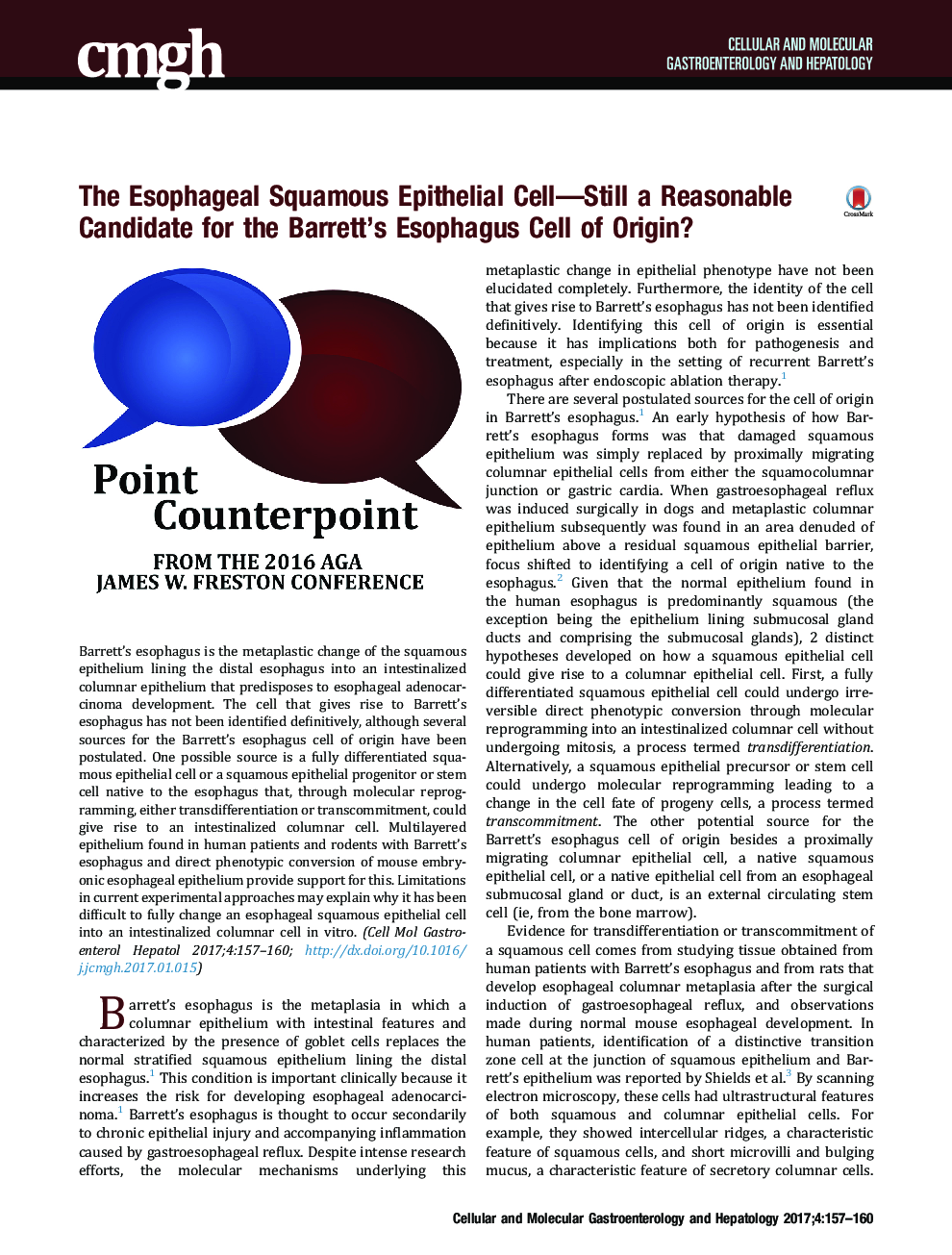| Article ID | Journal | Published Year | Pages | File Type |
|---|---|---|---|---|
| 5517174 | CMGH Cellular and Molecular Gastroenterology and Hepatology | 2017 | 4 Pages |
Barrett's esophagus is the metaplastic change of the squamous epithelium lining the distal esophagus into an intestinalized columnar epithelium that predisposes to esophageal adenocarcinoma development. The cell that gives rise to Barrett's esophagus has not been identified definitively, although several sources for the Barrett's esophagus cell of origin have been postulated. One possible source is a fully differentiated squamous epithelial cell or a squamous epithelial progenitor or stem cell native to the esophagus that, through molecular reprogramming, either transdifferentiation or transcommitment, could give rise to an intestinalized columnar cell. Multilayered epithelium found in human patients and rodents with Barrett's esophagus and direct phenotypic conversion of mouse embryonic esophageal epithelium provide support for this. Limitations in current experimental approaches may explain why it has been difficult to fully change an esophageal squamous epithelial cell into an intestinalized columnar cell in vitro.
